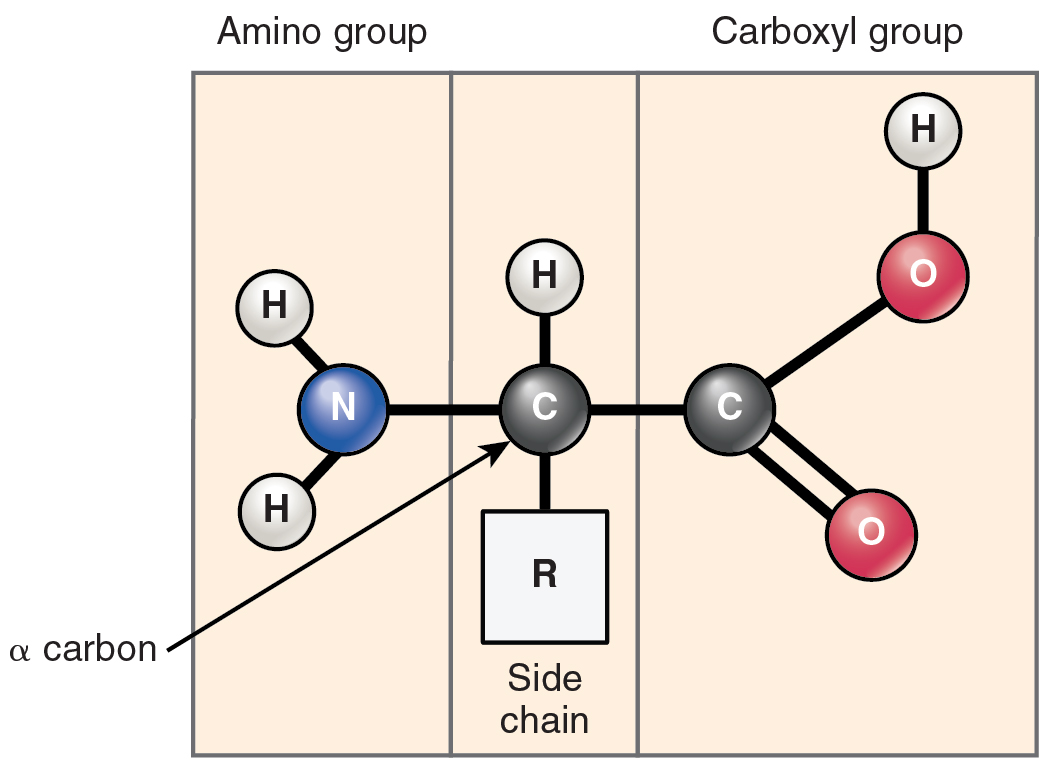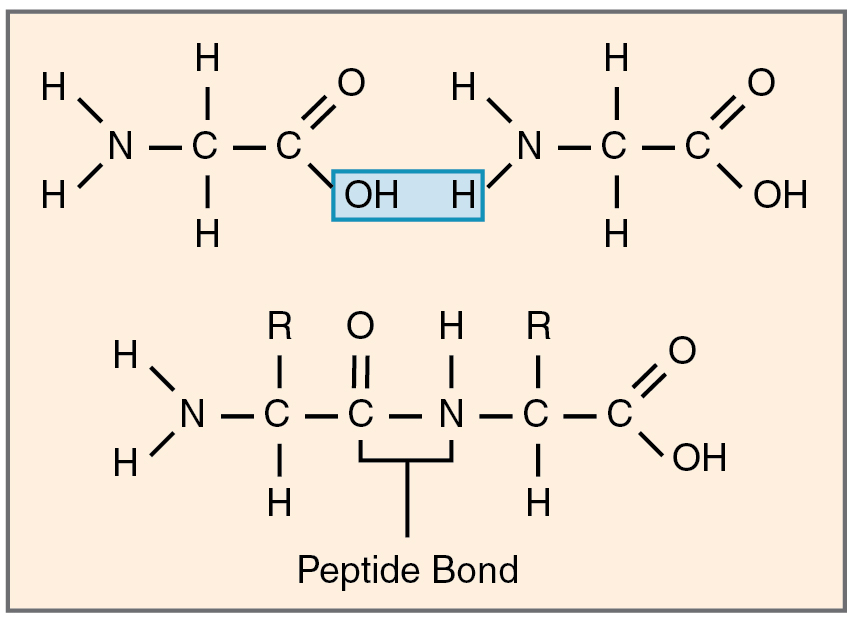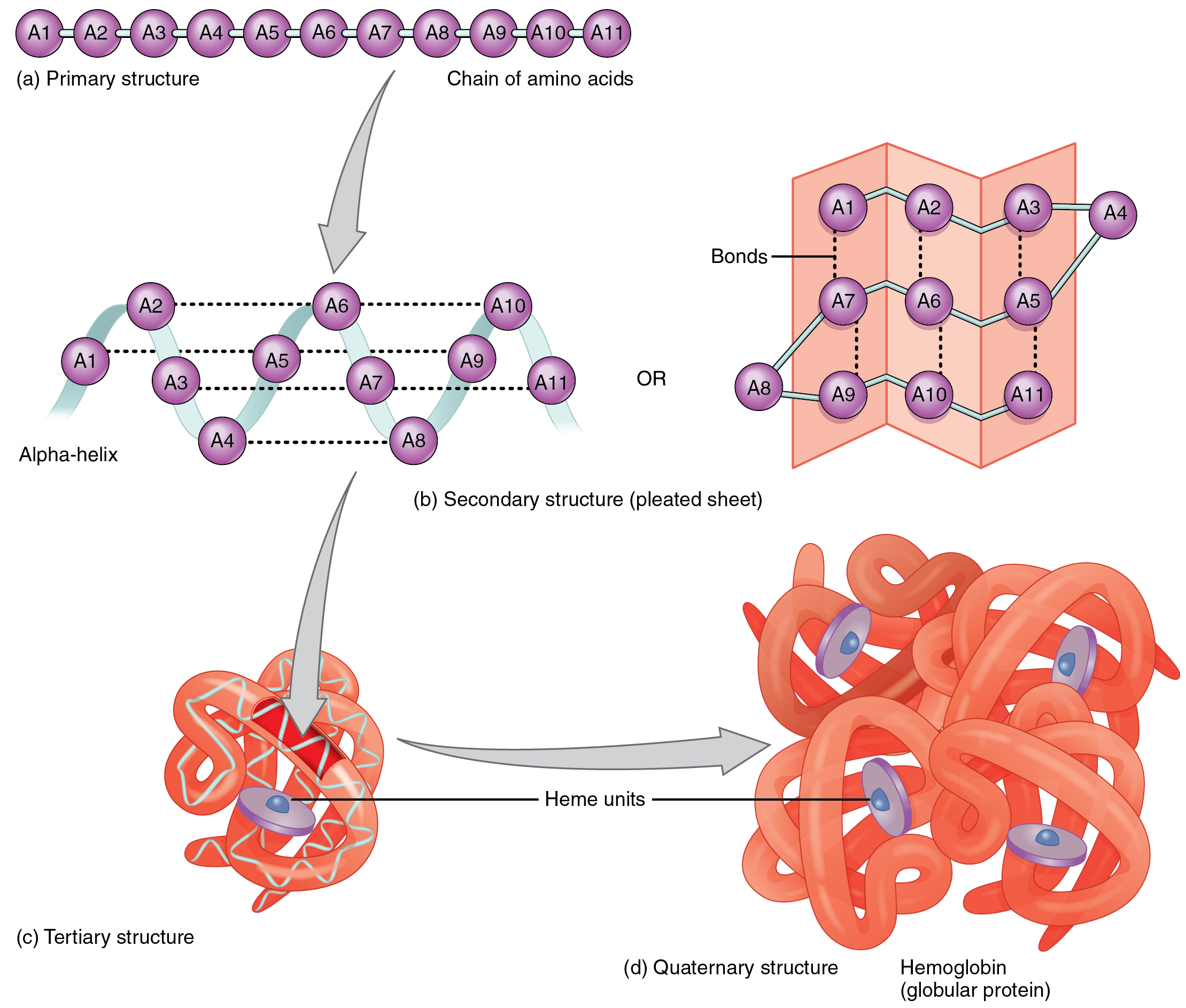| << Chapter < Page | Chapter >> Page > |
Proteins are polymers made up of nitrogen-containing monomers called amino acids. An amino acid is a molecule composed of an amino group and a carboxyl group, together with a variable side chain. Just 20 different amino acids contribute to nearly all of the thousands of different proteins important in human structure and function. Body proteins contain a unique combination of a few dozen to a few hundred of these 20 amino acid monomers. All 20 of these amino acids share a similar structure ( [link] ). All consist of a central carbon atom to which the following are bonded:

Notice that all amino acids contain both an acid (the carboxyl group) and a base (the amino group) (amine = “nitrogen-containing”). For this reason, they make excellent buffers, helping the body regulate acid–base balance. What distinguishes the 20 amino acids from one another is their variable group, which is referred to as a side chain or an R-group. This group can vary in size and can be polar or nonpolar, giving each amino acid its unique characteristics. For example, the side chains of two amino acids—cysteine and methionine—contain sulfur. Sulfur does not readily participate in hydrogen bonds, whereas all other amino acids do. This variation influences the way that proteins containing cysteine and methionine are assembled.
Amino acids join via dehydration synthesis to form protein polymers ( [link] ). The unique bond holding amino acids together is called a peptide bond. A peptide bond is a covalent bond between two amino acids that forms by dehydration synthesis. A peptide, in fact, is a very short chain of amino acids. Strands containing fewer than about 100 amino acids are generally referred to as polypeptides rather than proteins.

The body is able to synthesize most of the amino acids from components of other molecules; however, nine cannot be synthesized and have to be consumed in the diet. These are known as the essential amino acids.
Free amino acids available for protein construction are said to reside in the amino acid pool within cells. Structures within cells use these amino acids when assembling proteins. If a particular essential amino acid is not available in sufficient quantities in the amino acid pool, however, synthesis of proteins containing it can slow or even cease.
Just as a fork cannot be used to eat soup and a spoon cannot be used to spear meat, a protein’s shape is essential to its function. A protein’s shape is determined, most fundamentally, by the sequence of amino acids of which it is made ( [link] a ). The sequence is called the primary structure of the protein.


Notification Switch
Would you like to follow the 'Anatomy & Physiology' conversation and receive update notifications?